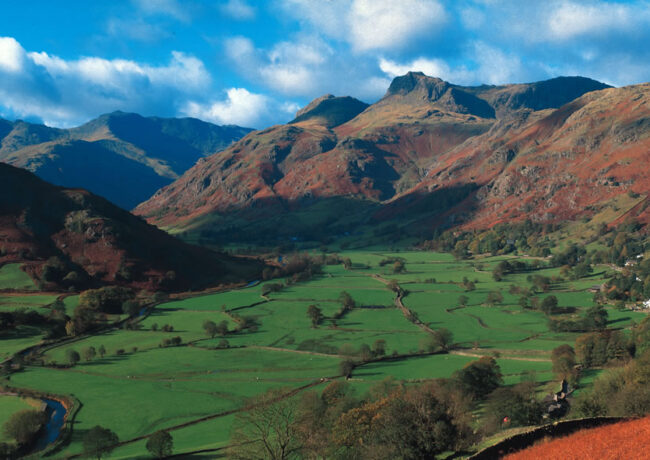Lake District made World Heritage Site
The Lake District has been named a World Heritage Site by Unesco, becoming the UK’s 31st area with the status, and the second in Cumbria in addition to Hadrian’s Wall.
The Lake District bid for recognition in Unesco’s cultural landscape category was put together by 25 organisations, making up the Lake District National Park Partnership.
Chairman of the partnership, Lord Clark of Windermere, described the status as “momentous”. The Lake District now joins more than 1,000 World Heritage Sites worldwide, including the Taj Mahal, the Great Barrier Reef and the Grand Canyon.
The Lakes will be the UK’s largest Unesco site, totalling 740,000 acres.
Three themes underpinned the bid for World Heritage status, in order to get the Lake District National Park recognised as a “cultural landscape of international significance”. These include examples of identity, such as the farmed landscape; and inspiration, how the area has led to the creation of art, literature and love of the place. The partnership argued that this in turn sparked the birth of conservation, with people fighting and investing to look after the area.
Lord Clark explained: “It is this exceptional blend which makes our Lake District so spectacularly unique and we are delighted Unesco has agreed. A great many people have come together to make this happen and we believe the decision will have long and lasting benefits for the spectacular Lake District landscape, the 18 million visitors we welcome every year and for the people who call the National Park their home.”
The decision on the Lake District was confirmed following the 41st Unesco committee meeting held in Krakow last week, in which the Liverpool waterfront’s “at risk” World Heritage status was also discussed. For a number of years Unesco has threatened to retract the mantle from the city, due to the scale of development proposed by Peel at Liverpool Waters. However, the committee decided that the status could remain.
Developer Primesite is bringing forward the office-to-resi conversion of Strand Plaza, within Liverpool’s Unesco site. Managing director Bobbie Johnson said that while losing the status would be “a huge blow” for the city, “developers should not be put off working within sites of historical importance”.
“It may require the highest levels of care with regard to architectural design and planning, but if done correctly we can create important assets for the future.”
Even in the case of the World Heritage status granted to the Lake District, Mike Innerdale, assistant director at the National Trust, has pointed out that the area “is not in universal good health”, and that part of the bid was about recognising that “we are losing soils, our wildlife has declined and our rivers are in a pattern of repeated flooding.
“We also agree that we must address this as a matter of urgency, working together and not in isolation of other societal values including farming, culture, access, recreation and tourism.”
Commenting on the status award, Michael Pemberton, chief executive of Britain’s Energy Coast, said he hoped the label would help to attract skilled employees, particularly to aid regeneration in the area: “The new accolade for the Lake District from Unesco presents a very exciting opportunity. Companies inside the park boundaries, and on the fringes across Cumbria are seeking talent to grow and diversify.
“Here at Britain’s Energy Coast we are recruiting four senior roles this quarter alone – across our finance, estates and property teams. We are a profit for purpose organisation, which means we exist for the benefit of the communities around us. To continue our good work we need to recruit exceptional talent, that is not just technically proficient, but also committed to bringing about positive change in the area.
“We hope the new status will help attract and, critically, retain talent in the region. We need to be vocal in letting people know you can live in this region of exceptional beauty and cultural importance, and have financially rewarding, fulfilling, dynamic careers.”





“we are losing soils, our wildlife has declined and our rivers are in a pattern of repeated flooding.” This is very true and affects people more than we realise. Unfortunately as the fells have been barren, treeless and devoid of most life except sheep for so long, in general people think that they look ‘beautiful’ and ‘wild’. In reality we have forgotten how rich and full of life they could be. Less grazing (which we subsidise through taxes) would help reduce such disastrous floods as we’ve seen recently, increase biodiversity value and provide welcome visual change from the current monotonous brown hillsides. I fear giving it world heritage status will lock it in this depauperate state for a long time. Trees for Life are restoring damaged landscapes in Scotland whilst also recognising the cultural heritage. Lets hope the Lakes can and will follow suit some day.
By Sheep museum